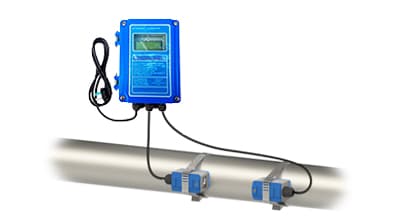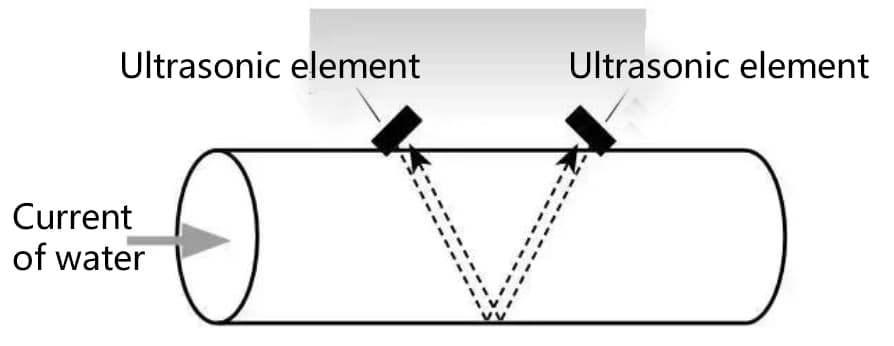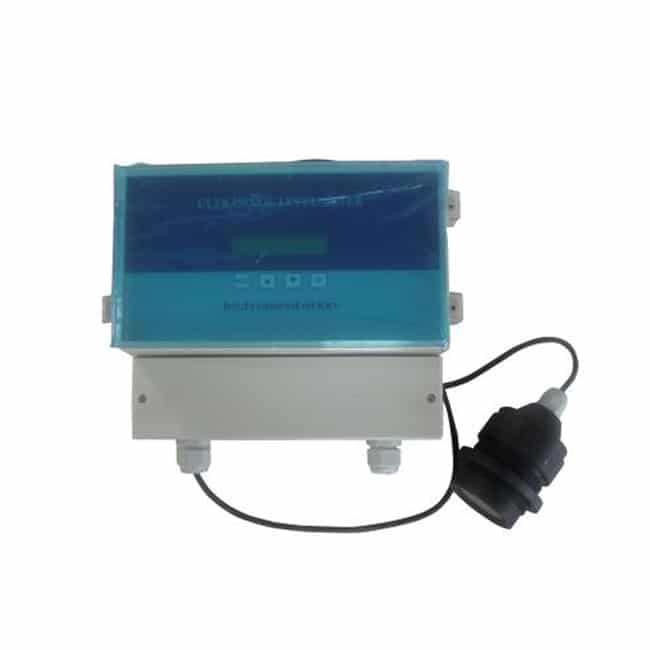What is ultrasonic flow meter?
Ultrasonic flow meter is an instrument that measures flow by detecting the action of a fluid flow on an ultrasonic beam (or ultrasonic pulse). It is a volumetric flow meter that requires the presence of air bubbles or tiny particles in the liquid stream. These meters are suitable for wastewater applications, but not for potable/distilled water. Therefore, this type of flow meter is ideal for applications that require chemical compatibility, low maintenance and low pressure drop.

These meters affect the audio characteristics of the liquid and will also affect viscosity, density, temperature, etc. As with mechanical flow meters, these meters do not include moving parts. The price of these meters is highly variable, so they can be used and maintained at a low cost.
Ultrasonic flow meter working principle
The construction of an ultrasonic flow meter can be accomplished by using upstream and downstream sensors, sensor pipes and reflectors. The ultrasonic flow meter works on the principle that it uses sound waves to resolve the velocity of the liquid in the pipe. There are two cases of no flow and flow in the pipe. In the first case, the frequency of the ultrasonic waves is transmitted into the pipe and the indication from the fluid is similar. In the second case, the frequency of the reflected wave is different due to the Doppler effect.
The frequency shift increases linearly whenever the fluid flows rapidly through the pipe. The transmitter processes the signal from the wave, whose reflection determines the flow rate. The transmitter timer sends and receives ultrasonic waves in both directions in the pipe. Under no-flow conditions, the flow time is the same between the flow sensor upstream and downstream.

Under both flow conditions, the upstream wave will flow at a lower rate than the downstream wave. As the liquid flows faster, the difference between the upstream and downstream times will increase. The flow rate is determined by the upstream and downstream times processed by the transmitter.
Types of ultrasonic flow meters
Common ultrasonic flow meters are radar, doppler velocity, ultrasonic clamp-on and ultrasonic level meters.
- Doppler velocity type meters use reproduced ultrasonic noise to calculate the velocity of a liquid.
- Radar type meters use microwave technology to transmit small pulses to be reflected back from the flow surface to the sensor to determine velocity.
- Ultrasonic clip-on gauges are well suited for applications where access to the pipe is difficult and otherwise impossible.
- Ultrasonic level gauges are well suited for determining liquid levels in both open and closed channels.
Features of ultrasonic flowmeter
Advantages
- It does not block the path of liquid flow.
- The o/p of the meter varies depending on the density, viscosity and temperature of the liquid.
- The flow of the liquid is bi-directional
- The meter has a good dynamic response.
- The meter’s output is in analog form
- Energy conservation
- Suitable for large mass flow measurements
- Easy to install and maintain
- Very good versatility
- No contact with liquids
- No risk of leakage
- No moving parts, pressure loss
- High accuracy
Disadvantages
- It is expensive compared to other mechanical flow meters.
- The meter’s design is complex
- The audible parts of this meter are expensive.
- These meters are complex compared to other meters and therefore require professionals to maintain and repair these meters
- It cannot measure rusty cement or concrete pipes.
- It does not work once there are holes or air bubbles in the pipe
- It cannot measure cement/concrete pipes or pipes lined with this material
Ultrasonic flowmeter applications
Routine applications of ultrasonic flow meters include the following.
- These meters are used in wastewater and dirty liquid applications
- These meters are used where chemical compatibility, less maintenance and low pressure drop are required.
- These meters are used to analyze volumetric flow by measuring the velocity of a liquid through ultrasound.
- These meters measure the difference between the propagation time of an ultrasonic pulse and the direction of liquid flow
- The applications of these meters range from process to supervisory processes
- This is a device used for volume flow measurement of liquids and gases.
- These are an excellent alternative to vortex flow meters and electromagnetic flow meters.



